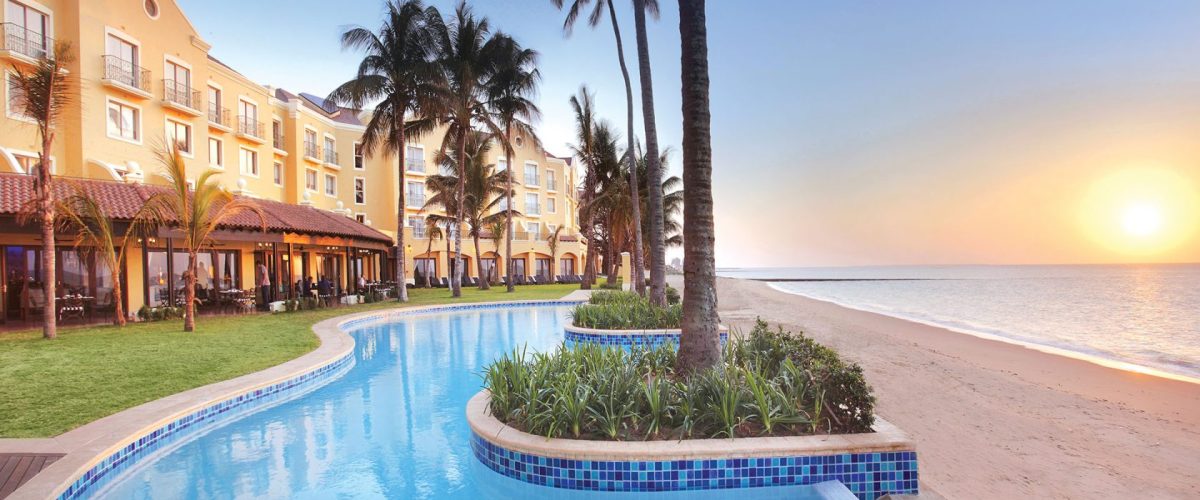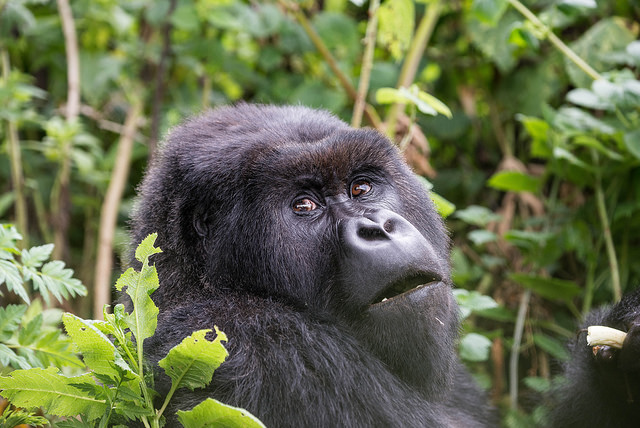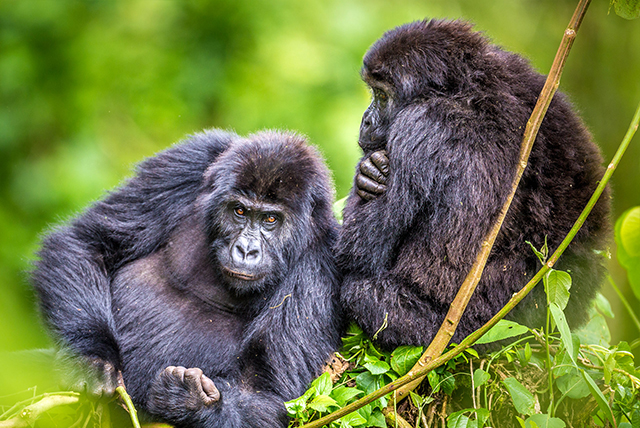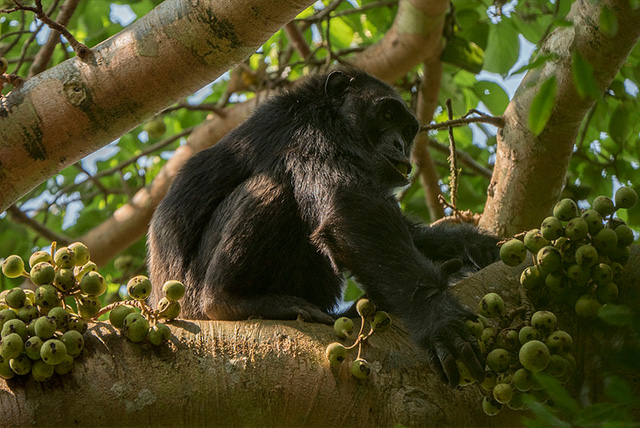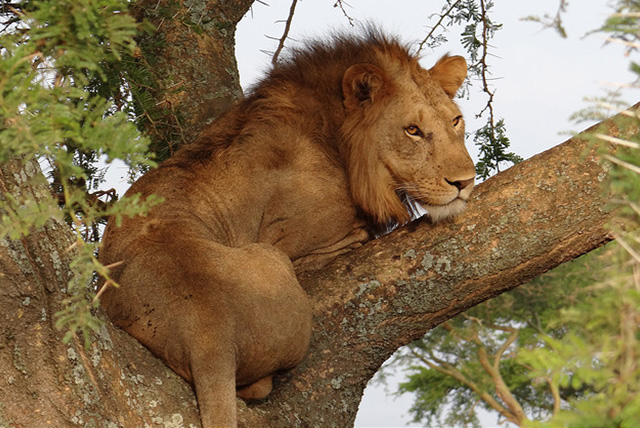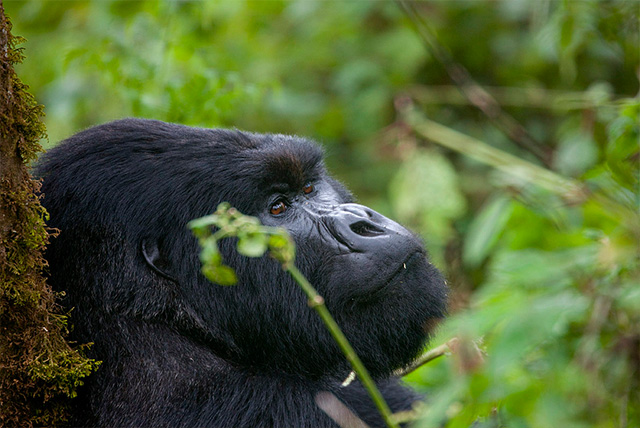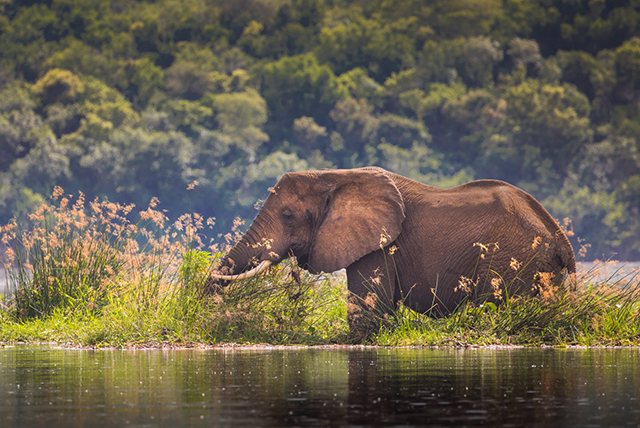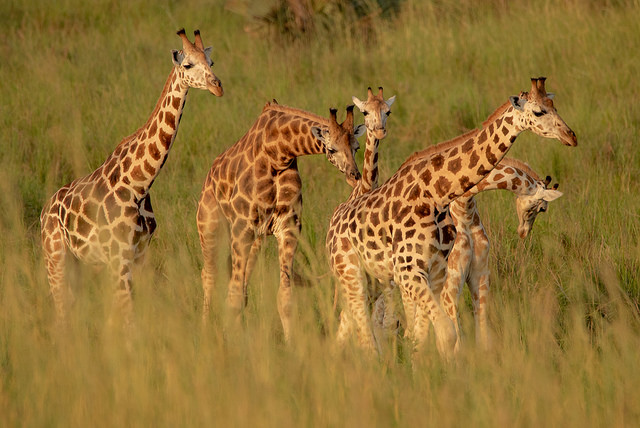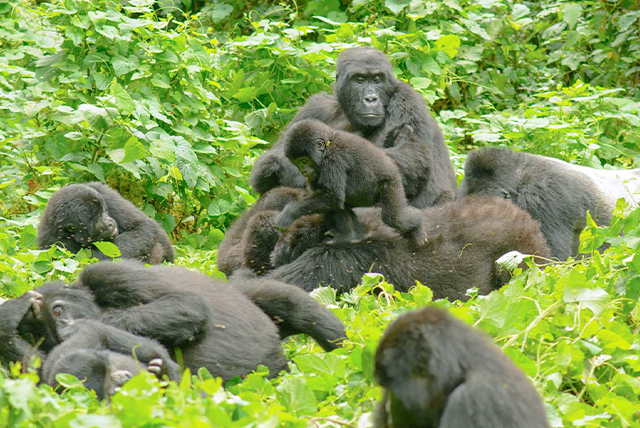National Parks and Reserves in Mozambique
One of the key draws of Mozambique is its stunning environmental conservation areas.
Currently, they span approximately 12.6% of the nation’s landscape, including 6 National Parks and 6 National Reserves.
The National Parks and Reserves are defined public spaces that showcase the beauty of our natural heritage. They strive to safeguard the rich variety of life and delicate environments, along with the diverse species of animals and plants.
This brochure not only highlights the ongoing efforts to safeguard Mozambique’s biodiversity but also showcases its remarkable features, offering a blend of leisure and environmental education on a grand scale, all while promoting ecological tourism.
Mozambique is more than a travel destination; it offers an unforgettable experience that you will cherish forever. A stunning array of landscapes awaits the visitor, showcasing an incredible diversity of both flora and fauna.
Niassa Game Reserve is a place brimming with excitement and exploration.
Location: The Niassa Game Reserve (NGR) is nestled in the heart of Niassa Province.
Expansive region covering 42,000 km2
Getting there: Travel by road through the Marupa district, where a road connects Marrupa to Lichinga, currently being paved over a stretch of approximately 150km. First, a flight to Lichinga, followed by an exhilarating journey by road from Lichinga to Marrupa, and then on to the Game Reserve. The NGR features an airstrip in Mecula, perfect for the landing and takeoff of aircraft. The Pemba airport acts as a gateway to the NGR. The journey along the road from Montepuez district in Cabo Delgado Province is full of possibilities.
Optimal time for exploration: In the winter months, particularly during the quieter period from April to October.
Attractions: A captivating array of landscapes including miombo forests, mountain forests, riverine vegetation, open savannah, and prairies. Fauna: Lions, leopards, wild dogs, elephants, buffaloes, zebras, elands, pala-palas, ox-horses, kudus, waterbucks, impalas, cinereous kids, and rock kids.
Visiting hours: The NGR welcomes explorers daily from 7:30 AM to 4:30 PM.
Unique features: It stands as one of the globe’s significant natural reserves and the largest in Mozambique. The NGR is currently the conservation area boasting the most diverse array of wild fauna species in the country, particularly the impressive population of elephants, estimated at 13,000 pachyderms. A recently uncovered species of lizards has been found in the NGR.
Quirimbus National Park
Location: The Quirimbas National Park (QNP) is located in Cabo Delgado Province, spanning six central districts and encompassing 11 islands in the stunning Archipelago of Quirimbas.
Area: 7,506 square kilometers
Access: The QNP invites exploration through air travel from all provincial capital cities (via Lam and Air Corridor) and regional flights from the RSA, Tanzania, and Kenya to Pemba. From there, adventurous journeys continue by road into the heart of the park, or by small aircraft available at Pemba airport, local tourist agents, or by sea to the enchanting park islands.
Optimal time for exploration: During the quieter months, from April to October.
Attractions: Islands, a vibrant sea environment featuring coral reefs and over 375 species of fish. Nature’s wonders (majestic mammals, vibrant birds, and diverse species). Culture of Ibo Island, Banco de Sao Lazaro showcasing its distinctive characteristics. Coastal wetlands, towering peaks, open woodlands, and expansive grasslands.
Fauna: A captivating array of marine species including whales, dolphins, dugongs, turtles, sharks, and a vibrant assortment of exotic fish species, alongside a wealth of opportunities for sports, fishing charters, and diving. Land Species: majestic elephants, powerful buffaloes, graceful pala-palas, elegant elands, skilled mabecos (dog-hunters), fierce lions, elusive leopards, cunning spotted hyenas, clever jackals, and formidable crocodiles. A diverse array of bird species.
Viewing Hours: The QNP welcomes visitors every day from 7:30 to 16:30.
Particularities: This Park boasts incredible potential for a variety of ecotourism activities, uniquely blending diverse tourist attractions within its boundaries, including the sun and the sea, as well as wild and cultural life. The vibrant coral reefs beckon for diving and snorkeling escapades.
Gile National Reserve
Location: The Gile National Reserve (GNR) is nestled in the Zambeze Province, encompassing the vibrant districts of Gile and Pebane. The GNR was first proclaimed as the Partial Game Reserve of Gile in 1932.
Area: 2,860 square kilometers
Road access is available from the capital city of Zambezia, Quelimane, or from various other locations within the Province. Adventurers are encouraged to embark on their journeys in 4×4 vehicles, given the rugged nature of the roads. Access is also available from Nampula city (Nampula Province).
Optimal Viewing Season – During the quieter months of winter, from April to October. Nonetheless, the prime time for observing birds is in the rainy season (November-March).
Accommodation: The GNR remains untouched by tourism development. Camping arrangements can be made through the GNR administration at the Musseia main campsite and the Lice inspection campsite.
Attractions: The landscape is predominantly characterized by miombo forest, dambos, reforested savannah, and vibrant riverine vegetation that thrives along numerous rivers and rivulets. The granitic Kopjes’ habitats, whether nestled within or surrounding the GNR, spark a sense of intrigue and exploration.
Fauna: A total of 95 mammal species can be found here, including majestic elephants, powerful lions, elusive leopards, spirited wild dogs, cunning spotted hyenas, graceful pala-palas, impressive kudus, and agile impalas. In addition, 114 bird species can be found here.
Viewing Hours: The GNR welcomes visitors every day from 7:30 AM to 4:30 PM.
The surrounding peaks of the Reserve offer an exhilarating experience for mountaineering enthusiasts. The GNR offers exciting tourist connections to the stunning Pebane beach, the picturesque Gurue landscape, the inviting Moebasse beach, and the enchanting first and second islands in Zambeze Province, along with the captivating Mozambique Island in Nampula Province.
Gorongosa National Park is a place brimming with excitement and exploration.
Location: The Gorongosa National Park (GNP) is nestled in Sofala Province, positioned on the southern edge of the Great Rift Valley, just 80km north-west of Beira.
Area: 5,732 square kilometers
Access: Reachable by road from either Chimoio or Beira city.
Optimal time for exploration: Throughout the winter months, particularly during the quieter period from April to October.
Stay: Under the stars.
Discover the breathtaking Gorongosa Mountain Ridge, explore the stunning Cheringoma Plateau, and immerse yourself in the beauty of Urema Lake. The house of lions stands out as one of the park’s captivating attractions, alongside the enchanting rivers and lakes, the stunning waterfall of river Murombo, and the breathtaking cascades of the Gorongosa mountain ridge.
Fauna: Buffaloes, elephants, ox-horses, hippos, zebras, inhacoses (waterbucks), elands, oribis, impalas, pala-palas, changes, pivas, facoceros (phacochoerus aethiopicus), imbabalas (female bushbucks), lions, leopards, spotted hyenas (crocuta crocuta), wild dogs (wolves), and crocodiles.
Explore the GNP every day from 7:30 AM to 4:30 PM.
This place stands out as one of the most renowned conservation areas in Mozambique. With incredible opportunities for bird watching and exploring the Gorongosa Mountain Ridge, along with guided excursions to observe the wildlife.
Marromeu National Reserve
Location: The Marromeu National Reserve (Marromeu NR) is nestled in the heart of Sofala Province.
Area: 1,560 square kilometers
Reachable by road from the vibrant city of Beira. Optimal time for exploration: In the winter months, particularly during the quieter period from April to October.
Accommodation: In Marromeu RN, you will find a lack of tourist development. However, you can arrange campsite accommodation through the administration of the Reserve.
Attractions: It boasts a vibrant population of buffalos and various mammals, but the highlight is undoubtedly the impressive array of birds, both seasonal and permanent.
Wildlife: Majestic lions, elusive leopards, powerful buffaloes, towering elephants, graceful kudus, swift impalas, agile changes, spirited inhalas, hearty wild boars, sturdy ox-horses, elegant elands, and lively wild pigs.
Visiting hours: The Marromeu NR welcomes explorers daily from 7:30 AM to 4:30 PM.
Highlights: The Marromeu NR safeguards the expansive wetland region along the Zambeze delta. The Marromeu NR was designated as a “RAMSAR Area” because of the vital significance of habitat conservation.
Chimanimani National Reserve
Location: The Chimanimani National Reserve (CNR) is nestled in the Sussundenga district, Manica Province.
Size: 640 km2
Reaching CNR is an exciting journey by road, whether you start from the vibrant city of Chimoio or take a scenic route from the airports in Tete, Chimoio, and Beira. Traveling in a 4×4 is a smart choice given the condition of the roads.
Ideal time for exploration: All year round. In the winter months from June to August, temperatures can plunge below zero degrees Celsius.
Accommodation: Simple campsites can be found in Chikukwa and Mahate.
Attractions: The CNR boasts a pristine ecosystem teeming with diverse life, particularly in its mountainous regions, featuring breathtaking landscapes, archaeological artifacts, ancient rock art, and well-preserved cultural beliefs and traditional architecture. It boasts a remarkable variety of plant species along with unique birds, reptiles, and butterflies that are found nowhere else.
Wildlife: Buffaloes, oribias, elands, blue goats, cinereous kids, rock kids, imbabalas (female bushbucks), changanes, pala-palas, changes, pivas, and facoceros (phacochoerus aethiopicus). A diverse array of bird species and reptiles, featuring unique endemic varieties.
Visiting Hours: The RNC welcomes explorers every day from 7:30 AM to 4:30 PM.
Unique features: The RNC safeguards a variety of ecosystems that are incredibly valuable, encompassing prairies and alpine flora. It offers ideal circumstances for engaging in a variety of thrilling pursuits: climbing, wildlife expeditions, kayaking, horseback riding, and exploring cultural heritage. The LNP is situated within the Chimanimani Transfrontier Conservation area.
Bazaruto Archipelago National Park
Location: The Bazaruto Archipelago National Park (BANP) is nestled in the vibrant districts of Vilanculos and Inhassoro in Inhambane Province. Consists of 5 islands in the Bazaruto Archipelago, located 20 km from the shores of Vilanculos and Inhassoro.
Size: 1,400 km2
Getting there: You can reach Vilanculos or Inhasooro by road or plane, and then continue your journey by air or sea to the islands.
Ideal time for exploration: All year round.
Attractions: It boasts an incredible variety of marine species and is recognized as one of the premier dive destinations in the world. Coastal landscapes featuring crystal-clear waters and a vibrant array of bird species.
Fauna: Dugongs, a variety of whale species, dolphins, sea turtles, sharks, and rays. A diverse array of exotic birds, such as the flamingo.
Viewing hours: The Bazaruto Archipelago National Park welcomes visitors every day from 7:30 AM to 4:30 PM.
Details: The BANP features both a maritime and a terrestrial aspect. It was established to safeguard marine life, including dugongs, sea turtles, and dolphins, as well as the delicate ecosystems of the islands. It is important to highlight that around 150 dugongs found in this region represent a significant population along the coast of East Africa.
Zinave National Park
Location: The Zinave National Park (ZNP) is nestled along the banks of the River Save in Inhambane Province.
Area: 4,000 km² Access:
Getting there by road from Inhambane city and Gaza or other locations in the province is recommended, especially in 4×4 vehicles, as the road conditions can be quite challenging.
Optimal viewing time: During the quieter months of winter, from April to October.
Accommodation: The ZNP remains untouched by tourist development. Camping arrangements can be made with the local administration at the main campsite.
Attractions: The ZNP boasts a rich variety of landscapes, including miombo forests, bushes, and riverine vegetation. The ZNP is home to lagoons as well.
Fauna: Kudos, inhalas, imbalabalas (female bushbucks), hippos, impalas, inhalas, changes, chipenes, cinereous kid kid of rocks, changanes, leopards, lions, cheetah, spotted hyenas (crocuta crocuta).
Visiting hours: The ZNP welcomes explorers every day from 7:30 AM to 4:30 PM.
This area is a key component of the Great Limpopo Transboundary Conservation Area Programme.
Limpopo National Park
Location: The Limpopo National Park (LNP) lies to the west of Gaza Province, close to the South Africa border and south of Zimbabwe border, covering an expansive area of 200 km.
Expansive region: 10,000 km2
Access: The LNP can be reached by a rugged road through the Ginyondo Border Post, departing from Kruger Park, as well as the Paluri Border Post (a scenic route). Accessing the park from inland Mozambique is an exciting journey, starting from Massingir and Mapai by road.
Optimal time for exploration: From the gentle months of April to October.
Accommodation: The LNP features two campsites equipped with facilities – visitors are encouraged to bring their own tents and supplies. Moreover, you can find campsites scattered along the Safari routes (Paluri-Massingir) at Tambolie, Mamba Pan, and Machamba.
Attractions: This park boasts a landscape that remains remarkably untouched, showcasing 10 unique terrains throughout its expanse. In an indoor setting, guests can marvel at nearly all species of Southern African wildlife, featuring the iconic Big Five. The Massingir Dam, along with the Shingwedzi River and Mapai, are captivating areas rich in wildlife and cultural experiences.
Wildlife: majestic elephants, powerful white rhinos, formidable buffaloes, regal lions, elusive leopards. Other Animals: wild dogs, hippos, zebras, impalas, kudus, wild boars, wild pigs, cinereous kids, kids on rocks, ox-horses, inhalas, spotted hyenas, pala-palas, pivas, changes, oribis (ourebia ourebi) and crocodiles.
Viewing Hours: The LNP welcomes visitors every day from 7:30 AM to 4:30 PM.
Details: The LNP is a component of the Great Limpopo Transboundary Conservation Programme. The region around the Shingwedzi River is perfect for exploring the wonders of wildlife on foot. The Massingir Dam offers a thrilling array of water sports for those seeking excitement. Exploring the vibrant culture of Mapai offers an exciting experience.
Banhine National Park
Location: The Banhine National Park (BMP) is nestled in the captivating Gaza Province.
Expansive region: 6,000 km2
Access: Reachable by road from Inhambane village or Gaza Province, though the roads are in precarious conditions.
Optimal viewing time: During the quieter months of winter, from April to October.
Accommodation: The BNP remains untouched by tourist development. Camping arrangements can be made through the BNP administration at the main campsite.
Attractions: The park features a variety of striking landscapes, including human-influenced areas, expansive savannahs, and lush mopane and miombo forests.
Wildlife: Majestic lions, elusive leopards, graceful kudus, swift impalas, vibrant inhalas, striking cinereous kids, mighty hippos, agile oribis, fascinating pala-palas, towering ostriches, and formidable crocodiles.
Viewing Hours: The BNP welcomes visitors every day from 7:30 AM to 4:30 PM.
This area is an integral component of the Great Limpopo Transfrontier Conservation Area Programme. The region boasts the highest humidity levels in inland Mozambique, shaped by the dynamic patterns of seasonal rainfall and droughts.
Pomene National Reserve is a place brimming with excitement and exploration.
Location: The Pomene National Reserve (PNR) is nestled in the vibrant Massinga District of Inhambane Province.
Area: 26 km²
Reachable by road from either Maputo or Beira city. Guests are encouraged to embark on their journey in a 4×4 vehicle. Traveling by plane from Inhambane airstrip is another exciting option for reaching your destination.
Optimal time for exploration: all year round.
Attractions: The diverse landscapes of the Reserve, including the unique vegetation of the dunes, savannahs, mangroves, and marshes, create an exciting array of ecotourism opportunities for the PNR.
Fauna: Ox-horses, wild boars, cinereous kids, chipenhes, irnpalas, monkey-dogs, and grey monkeys. A diverse array of bird species awaits exploration.
Explore the PNR every day from 7:30 AM to 4:30 PM.
Unique features: A collection of diverse land and marine environments, with lush dune landscapes and vibrant sandy soil woodlands.
Maputo National Reserve
Location: The Maputo National Reserve (Maputo NR) is nestled in the heart of Maputo Province, within the Matutuine district.
Area: 778 square kilometers
Getting there: Start your journey in the vibrant capital of Maputo, cross the Bay, and then travel by road from Catembe, or take a scenic drive from Boane.
Ideal time for exploration: All year round.
Stay at the Milibangalala camping area. A few community lodges can be found in the regions surrounding the Maputo NR. Numerous exciting tourist activities await in the southern part of the Maputo NR, particularly around Ponta do Ouro.
Attractions: A variety of stunning beaches along the coast (Ponta Chemucane, Ponta Menbene, Ponta Milibangalala, and Ponta Dobela): Diverse landscapes (sandy soil forests, humid land forests, marshes, mangroves, dunes). Lagoons (Piti, Maunde, Nela, Machai, Chinguti) await exploration. Sacred and historical sites (perfect for immersive exploration).
Wildlife: Majestic elephants, transformations, accolades, pivas, changanes, cinereous kids, rocky younglings, crocodiles. A diverse array of bird species awaits discovery. The marine fauna boasts an incredible diversity, featuring majestic whales, playful dolphins, nesting marine turtles along the coast, and a multitude of fish species.
Viewing Hours: The Maputo NR welcomes visitors every day from 7h30 to 16h30.
Highlights: The Maputo NR safeguards a truly remarkable habitat, known as the Maputoland regional centre of endemism. The MNR boasts breathtaking vistas, showcasing a rich variety of habitats, landscapes, and stunning coastal views that invite exploration. The reserve is a perfect spot for observing wildlife and birds, providing chances for sports fishing, diving, and canoeing. Its unique location attracts national tourists from South Africa and Swaziland, making it a vibrant destination. It is a component of the Lubombo Transfrontier Conservation Area Programme.
